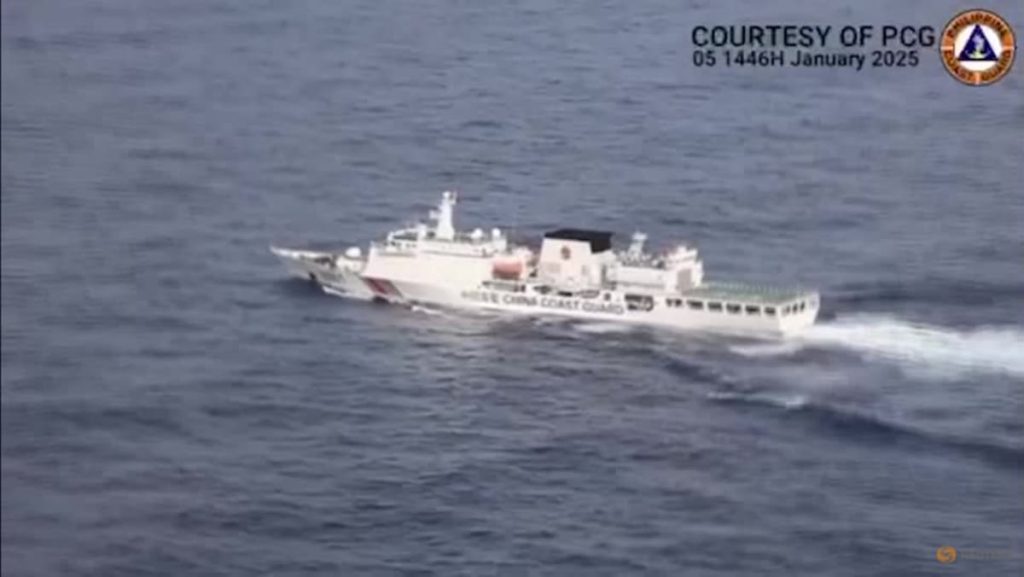The escalating tension in the South China Sea has once again been brought to the forefront with the recent appearance of China’s largest coast guard vessel, the CCG 5901, within the Philippines’ Exclusive Economic Zone (EEZ). The Philippines has responded swiftly, deploying both air and maritime assets to monitor the vessel, which has been dubbed “the monster” due to its imposing size. This incident highlights the ongoing power struggle in the region, with China asserting expansive maritime claims and the Philippines, backed by its alliance with the United States, determined to defend its sovereign rights. The presence of the CCG 5901, approximately 165 meters in length, is perceived by the Philippines as a blatant act of “intimidation, coercion, and aggression.” The Philippine government has vowed to respond appropriately to any provocative actions by the Chinese vessel.
The strategic importance of the South China Sea cannot be overstated. It serves as a vital trade route, handling an estimated US$3 trillion worth of goods annually. China’s sweeping claims over most of the South China Sea, including areas within the EEZs of neighboring countries like Vietnam, the Philippines, and Malaysia, have been a source of constant friction. China maintains a significant coast guard presence in the region, often seen as a means of enforcing its disputed claims and undermining the sovereignty of other nations. The 2016 ruling by the Permanent Court of Arbitration in The Hague, which invalidated China’s expansive maritime claims, has been consistently rejected by Beijing, further complicating the situation.
The recent incident involving the CCG 5901 underscores the complex interplay of geopolitical factors in the South China Sea. China’s growing assertiveness in the region is viewed with increasing concern by its neighbors and the United States. The Philippines, under President Ferdinand Marcos Jr., has adopted a more assertive stance against what it perceives as Chinese aggression, leading to frequent diplomatic spats. China, in turn, accuses the Philippines of encroaching on its waters, perpetuating a cycle of accusations and counter-accusations. This latest encounter serves as another chapter in the ongoing saga of maritime disputes in the South China Sea, highlighting the challenges in maintaining peace and stability in the region.
The Philippine Coast Guard’s interaction with the CCG 5901 provides a glimpse into the tense on-the-ground reality. Video footage released by the Philippine Coast Guard shows their personnel ordering the Chinese vessel to leave the area, asserting that it has no authority to operate within the Philippines’ EEZ. The Chinese vessel, however, responded by claiming that it was conducting law enforcement duties within its jurisdictional waters, a clear reflection of the conflicting interpretations of maritime boundaries. This exchange encapsulates the core of the dispute, with both sides claiming legitimate jurisdiction over the same waters. The Philippines views the presence of the CCG 5901 not only as a direct challenge to its sovereignty but also as an attempt to intimidate Filipino fishermen and disrupt their livelihoods.
The Philippine government’s response has been multifaceted. Beyond deploying military and coast guard assets to monitor the Chinese vessel, the National Security Council spokesperson, Jonathan Malaya, has publicly denounced China’s actions, characterizing them as “intimidation, coercion, aggression, and deception.” He further emphasized that the Philippine maritime presence in the area would be reinforced to support Filipino fishermen and protect their right to fish in their traditional fishing grounds. This commitment to bolstering maritime security underscores the Philippines’ determination to safeguard its interests in the South China Sea and provide security for its citizens.
The ongoing tensions in the South China Sea present a significant challenge to regional stability and international law. The presence of China’s largest coast guard vessel within the Philippines’ EEZ is a clear illustration of the complex dynamics at play. The Philippines’ resolute response, coupled with its commitment to upholding international law and protecting its sovereign rights, sets the stage for a continued period of uncertainty and potential confrontation. The international community will be closely watching developments in the region, as the South China Sea remains a potential flashpoint with global implications. The need for a peaceful and diplomatic resolution to the ongoing disputes becomes increasingly urgent, as the risk of escalation remains a constant threat.

